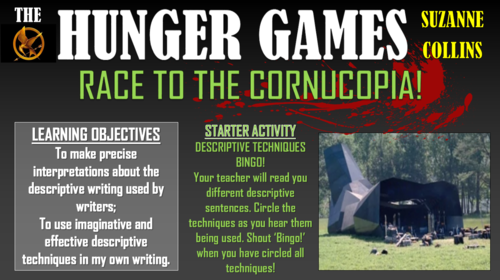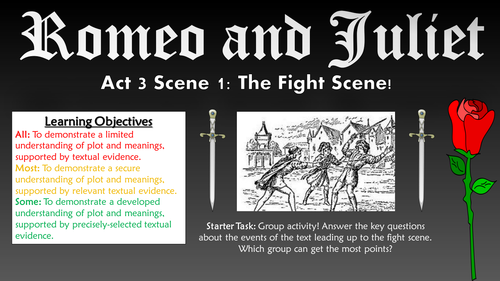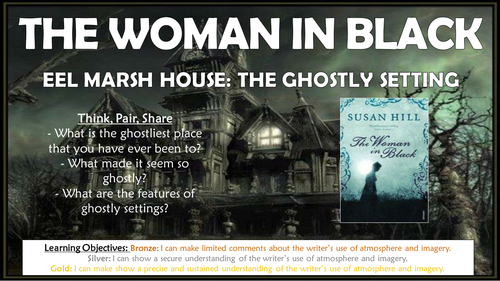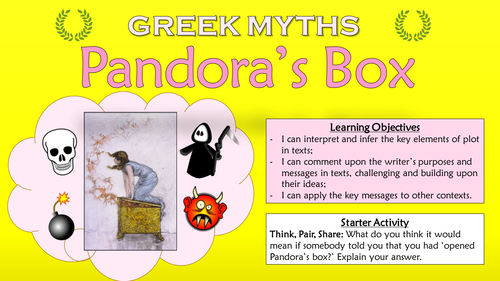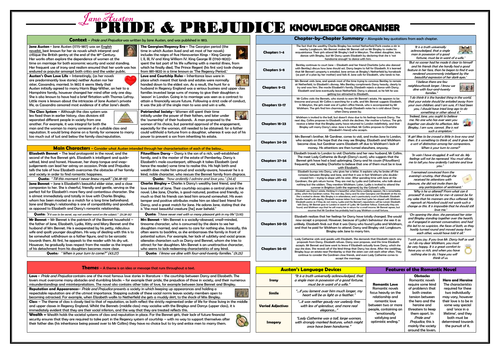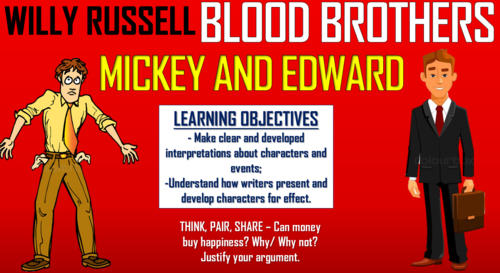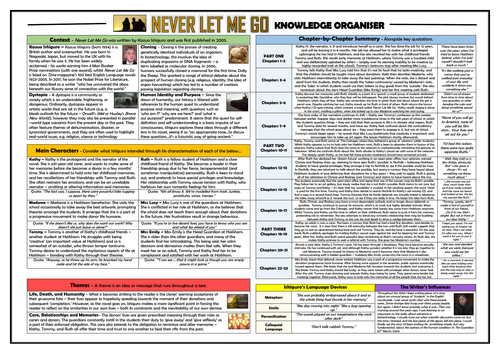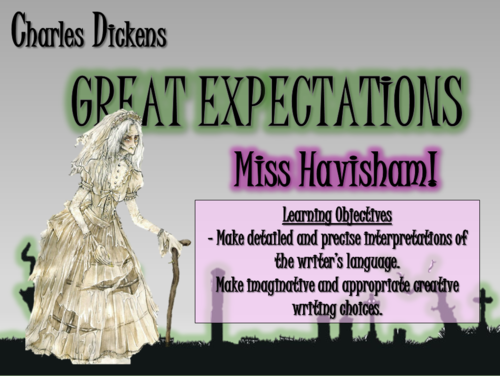
3k+Uploads
1906k+Views
2238k+Downloads
Languages

The Hunger Games - Race to the Cornucopia! (Descriptive Writing Lesson)
This engaging and informative lesson enables students to compose sophisticated, imaginative creative writing, through producing a first person account about competing in the opening stages of The Hunger Games. In order to do so, students first analyse the descriptive writing devices and sentence structures used by Suzanne Collins in Chapter 11 of The Hunger Games - the section in which the Hunger Games commence – before applying what they have learnt to their own compositions.
The lesson follows a step-by-step learning journey, in which children learn through:
Defining each of the different types of descriptive devices, through playing a fun, interactive bingo game;
Reading an extract from Chapter 11 of the text (provided) which describes the moments immediately before and after the Hunger Games commence;
Identifying the language techniques used in the extract to paint an image of place in the minds of the readers, and to create the desired atmosphere;
Analysing the effectiveness of each of Collins’ descriptive devices;
Analysing the sentence structures and lengths employed by Collins in the extract;
Creating their own first-person description of the horrific moments at the Cornucopia, before and after the Hunger Games begin;
Peer assessing each other’s learning attempts.
Included is:
Whole lesson PowerPoint - colourful and comprehensive;
Bingo Cards for the starter activity (and host instructions/ questions);’
Extract from Chapter 11 of The Hunger Games;
Structure strips to support the descriptive writing;
Writing to Describe Helpsheet to support the descriptive writing;
Comprehensive Lesson Plan.
All resources are provided in Word (for easy editing) and PDF (to ensure formatting remains fixed between different computers).
There are also opportunities for group learning, speaking and listening, peer assessment, and whole class discussion. I originally used these resources with year 8 classes, however colleagues have used them for between years 5 and 10 with some adaptations.
All images are licensed for commercial use, and image rights are listed on the last page of the presentation.

Simple, Compound and Complex Sentences!
This detailed and engaging lesson enables students to gain an understanding of simple, compound and complex sentences, and to use a variation of sentence types in their own writing for clarity and effect.
Students learn through a number of fun and interactive tasks, which enable them to:
- Define and exemplify simple, compound, and complex sentences;
- Identify them in writing;
- Understand and analyse how different types of sentences can be used for clarity and effect;
- Create a written piece using a variety of sentence structures for clarity and effect;
- Evaluate their use of different sentence structures.
The resources include:
-Visually engaging and comprehensive whole-lesson presentation;
-Resources for the card-sorting activity;
-A model example and analysis worksheet;
-A success criteria;
-Step-by-step lesson plan.
All images are licensed for commercial use, and are cited on the final page of the slide.

Northern Lights - Setting Descriptions!
This engaging and informative lesson enables students to make precise interpretations of the descriptive language used by Philip Pullman in his descriptions of settings in ‘Northern Lights.’ They also learn how the depiction of settings can have a profound impact upon the tone and atmosphere of a novel, and apply this understanding (along with their knowledge of the key language devices) to form their own vivid and imaginative descriptions of places.
The lesson follows a step-by-step learning journey, in which children learn through:
Understanding the power of places and settings, especially the impact that they have on atmosphere and tone;
Defining each of the different types of descriptive devices, through completing an interactive group activity;
Reading extracts from the text in which Pullman describes ‘The North’ and ‘The Bear Palace,’ and identifying the language techniques used to paint an image of place in the minds of the readers;
Analysing the effectiveness of each of Pullman’s descriptive devices;
Creating their own description of an awe-inspiring place, utilising appropriate and effective descriptive devices throughout;
Peer assessing each other’s learning attempts.
Included is:
Whole lesson PowerPoint - colourful and comprehensive;
Cards for the Card Sorting Activity;’
Extracts from Northern Lights;
‘Bear Palace’ analysis worksheet;
Writing to Describe Helpsheet
All resources are provided in Word (for easy editing) and PDF (to ensure formatting remains fixed between different computers).
There are also opportunities for group learning, speaking and listening, peer assessment, and whole class discussion. I originally used these resources with year 7/8 classes, however colleagues have used them for between years 5 and 10 with some adaptations. The PowerPoint is in the zip file.
All images are liensed for commercial use, and image rights are listed on the last page of the presentation.
Bundle Sale

Romeo and Juliet Huge Bundle!
THIS BUNDLE CONTAINS ALL OF THE ROMEO AND JULIET LESSONS, IN ADDITION TO THE COMPREHENSION BOOKLET, THE KNOWLEDGE ORGANISER AND THE POINTLESS GAME!
This engaging, varied, and informative scheme of learning is designed to help students gain understanding, assessment skills, and key interpretations of William Shakespeare's tragedy 'Romeo and Juliet.' Made up of a wide-range of interesting and exciting lessons, students should complete this scheme having gathered vital skills in: interpreting the significant meanings of the text, understanding the writer's ideas within the text, identifying the traits of key characters, settings, and themes, understanding dramatic and language devices, and relating the text to its social and historical context.
Stimulating, visual, and easily adaptable, these lessons provide suggested learning objectives and outcomes for students of a wide-range of abilities - The vast majority of tasks are differentiated to allow for different abilities and needs in your classroom. Each lesson loosely follows this logical learning journey to ensure that students learn in bite-size steps:
- Engaging
- Defining/ Understanding
- Identifying/Remembering
- Analysing/ Creating
- Peer or self evaluating.
All of the lessons are interactive, employ a variety of different teaching and learning methods and styles, and are visually-engaging. Resources, worksheets, and lesson plans are all provided.

A View from the Bridge Knowledge Organiser/ Revision Mat!
This detailed and visually-appealing resource offers a complete reference point for students learning or revising Arthur Miller's 'A View from the Bridge.' It contains comprehensive sections on:
- Context;
- Scene by Scene Summary (with quotes);
- Main Characters;
- Themes;
- Miller's Dramatic Devices;
- The Features of Tragedy.
Key words and ideas are underlined for easy reference. The resource is designed to be printed onto A3, and is provided as both a PDF and a Word version (so that you can edit if you want to). All images used are licensed for commercial use and are cited on a separate document (included).

Romeo and Juliet: Act 3 Scene 1 - The Fight Scene!
This interesting and engaging lesson enables students to gain a detailed understanding of the fight scene in William Shakespeare’s romantic tragedy Romeo and Juliet. Students learn to demonstrate a developed understanding of the plot and meanings throughout the scene, with the support of precisely-selected textual evidence. In particular, students consider Romeo's struggle between love and honour throughout the duration of the scene, and how social demands lead him towards his demise.
The lesson utilises a range of tasks, that require students to be attentive and interactive learners. It follows this learning journey:
- Establishing the events leading up to the fight, including a discussion regarding the characters and events that make a physical confrontation inevitable;
- Reading and interpreting Act III Scene I, interpreting and inferring the key meanings;
- Understanding the key themes throughout the scene, including Romeo's struggle between love and honour;
- More closely analysing the key meanings and developments within the scene;
- Peer/self evaluating the learning in the lesson.
Included in this resource pack are:
- A well-presented, thorough, and informative, whole-lesson PowerPoint presentation;
- Resources for the reading and interpreting activity - full scene transcript with space for notes;
- A closer analysis worksheet based upon Romeo's struggle;
- A template to help scaffold the main task, complete with P.E.E instructions;
- A challenging and thought-provoking worksheet, and an answer sheet for the teacher.
All images in this resource are licensed for commercial use, and are cited on the final slide of the lesson presentation.

The Woman in Black: Eel Marsh House - The Ghostly Setting!
This engaging and informative lesson enables students to make precise and sustained interpretations regarding Susan Hill’s portrayal of Eel Marsh House in the early chapters of The Woman in Black. In particular, they consider how the language (e.g. similes and pathetic fallacy) are used to introduce and develop the imagery and atmosphere of the house. They also consider how the features of the house (e.g. its isolation and age) relate to the generic conventions of scary settings.
The lesson follows a step-by-step learning journey, in which children learn through:
- Defining the key conventions of ghostly settings;
- Reading extracts introducing Eel Marsh House, and relating the conventions of ghostly settings to the description of Eel Marsh House;
- Identifying and exploring how the features of Hill's language help to create imagery and an atmosphere that surrounds Eel Marsh House;
- Analysing how Hill's language and subject matter are effective in the description of Eel Marsh House;
- Peer assessing each other's learning attempts.
Included is:
- Whole lesson PowerPoint - colourful and comprehensive;
- Extracts from 'The Journey North' and 'Across the Causeway' of The Woman in Black;
- The Features of Ghostly Settings worksheet;
- Analysis template with success criteria for creating well-structured responses;
- Comprehensive lesson plan.
There are also opportunities for group learning, peer assessment, and whole class discussion. This was originally taught to middle-ability year 10 groups, but can easily be differentiated for groups of different ages and abilities.
All images are licensed for commercial use, and image rights are listed on the last page of the presentation.

Love After Love Comprehension Activities Booklet!
This 16-page resource booklet contains a wide range of challenging and engaging comprehension activities for use throughout the reading of Derek Walcott’s poem ‘Love After Love.’ Teachers have found them particularly useful throughout teaching, or for exam revision or guided reading sessions. They are perfect for aiding the progress of students towards meeting the key English Literature assessment objectives - suitable for all examining bodies. Students have found these resources extremely engaging, and it is clearly highlighted within each task regarding which assessment strands the task is designed to demonstrate.
It is provided in both Word (to allow for easy editing) and PDF (to ensure for consistency of formatting between computers).
Activities within the booklet include (amongst many others):
‘Analysing Context’ - helping students to ‘Show understanding of the relationships between texts and the contexts in which they were written.’
‘Analysing Subject Matter, Language and Structure’ - to help students to ‘Analyse the language, form and structure used by a writer to create meanings and effects, using relevant subject terminology where appropriate.’
‘Diary Entry’ - to help students to ‘Use a range of vocabulary and sentence structures for clarity, purpose and effect, with accurate spelling and punctuation. Make an informed personal response, recognising that other responses to a text are possible and evaluating these.’
‘The Speaker’ - to help students to ‘Read, understand and respond to texts. Students should be able to: maintain a critical style and develop an informed personal response use textual references, including quotations, to support and illustrate interpretations.’
Bundle Sale

Power and Conflict Poetry Knowledge Organisers Huge Bundle!
THIS BUNDLE CONTAINS KNOWLEDGE ORGANISERS FOR ALL 15 OF THE POWER AND CONFLICT POEMS!
These clear, detailed and visually-appealing knowledge organisers offer complete reference points for students learning or revising the following poems from the ‘Power and Conflict’ anthology:
Exposure - Wilfred Owen;
Bayonet Charge - Ted Hughes;
The Charge of the Light Brigade - Alfred, Lord Tennyson;
Poppies - Jane Weir
War Photographer - Carol Ann Duffy
Kamikaze - Beatrice Garland
Ozymandias - Percy Bysshe Shelley
My Last Duchess - Robert Browning
Storm on the Island - Seamus Heaney
Checking Out Me History - John Agard
Tissue - Imtiaz Dharker
Remains - Simon Armitage
The Prelude (Extract) - William Wordsworth
The Emigree - Carol Rumens
London - William Blake
Each organiser contains a number of detailed, clear, and colourful sections explaining the key elements of the poem:
Context;
Line-by-Line Analysis;
Poetic Devices/ Language Devices;
Themes;
Form/Structure;
Poems for Comparison;
The Poet’s Influences.
The resources are designed to be printed onto A3, and are provided as both PDFs and Word documents (so that you can edit should you wish to). All images used are licensed for commercial use and are cited on a separate document (included).

The Merchant of Venice - Act 4 Scene 1 - The Courtroom Scene!
This engaging and informative lesson enables students to make clear, detailed and well-informed interpretations of Act IV Scene I of The Merchant of Venice. In particular, students develop their understanding of the key events/ implications of the scene, identify and analyse the language devices used by Shakespeare within key quotations from the scene, and consider the effect of these choices on Shakespearean audiences.
The lesson follows a step-by-step learning journey, in which children learn through:
Engage with an artist’s impression of the courtroom scene, honing their skills of inference and deduction;
Reading and comprehending the main events and meanings in the courtroom scene;
Identifying and analysing Shakespeare’s use of language through examples of Portia and Shylock lines in the scene;
Considering Shakespeare’s intentions and the Shakespearean audiences reactions to the scene;
Self assessing their learning through the lesson;
Included is:
Whole lesson PowerPoint - colourful and comprehensive;
Language devices cards for the card-sorting activity;
Key quotations cards;
Copy of Act IV Scene I;
Shakespeare’s Intentions/ Audience Reactions template;
Comprehensive lesson plan.
Resources are provided in PDF (to maintain formatting), Word (so that they are easily editable) and also in zipfiles.
The lesson contains opportunities for group learning, speaking and listening, peer assessment, and whole class discussion. I originally used these resources with year 10 and 11 classes, however colleagues have used them for between year 9 and year 13 with some adaptations.
All images are licensed for commercial use, and image rights are listed on the last page of the presentation.

Greek Myths: Pandora's Box
This interesting and highly-stimulating lesson enables students to gain a clear understanding of the key meanings in the Greek Myth ‘Pandora's Box.’ Through engagement with the story, students learn to interpret and infer the key elements of plot in texts, comment upon the writer’s purposes and messages in texts, challenging and building upon their ideas, and apply the key messages to other contexts.
The lesson follows a clear, logical, bite-size learning journey, which guides students towards differentiated learning objectives. Over the course of this journey, they become able to:
- Understand the phrase 'opening Pandora's Box' and apply it to modern contexts;
- Read the story 'Pandora's Box' and interpret the key meanings;
- Summarise the key events of the story through a storyboard;
- Identify, explain, and analyse the writer's key messages in 'Pandora's Box;'
- Engage deeply with the text by challenging and building upon the ideas/messages raised by the writer;'
- Test their understanding of the story by creating their own recreations;
- Peer assess each other's learning attempts.
This resource pack includes:
- A visually engaging whole-lesson PowerPoint presentation;
- Paper copies and online links to a copy of Pandora's Box;
- Pandora's Box Storyboard;
- The Writer's Message Worksheet;
- A detailed lesson plan, complete with what the teacher and students should aim to achieve at each stage of the lesson.
All images are licensed for commercial use, and are cited on the final slide of the PowerPoint.

Similes and Metaphors in Popular Music!
This interesting and highly stimulating lesson enables students to demonstrate a developed and sustained understanding of the effect of figurative language in popular music texts. In particular, students learn to explore the meanings behind similes and metaphors across songs from a range of genres, considering the effect upon the whole text and the intended audience. As one would expect, Students love learning about similes and metaphors through popular music, and this lesson can really help to open students' eyes to how language can be crafted for effect. This has numerous benefits in later poetry and descriptive writing lessons.
The lesson follows a clear, logical, bite-size learning journey, which guides students towards differentiated learning objectives. Over the course of this journey, they become able to:
- Define and identify similes and metaphors;
- Explain the similarities and differences between songs and poetry;
- Observe and listen to several examples of similes and metaphors in popular music examples;
- Understand and analyse the effect of similes and metaphors upon meanings and the reader;
- Apply their knowledge of why similes and metaphors are used to a range of contexts and musical genres;
- Collaborate and present their key findings about similes and metaphors in songs to their classmates;
- Self-assess their learning attempts.
This resource pack includes:
- A visually engaging whole-lesson PowerPoint presentation;
- Link to an online compilation video of similes and metaphors in popular music;
- 3 x lyrics analysis worksheets of varying difficulties (Katy Perry, Train, and Florence and the Machine - all clean)
- A detailed lesson plan, complete with what the teacher and students should aim to achieve at each stage of the lesson.
All images are licensed for commercial use, and are cited on the final slide of the PowerPoint.

Pride and Prejudice Knowledge Organiser/ Revision Mat!
This detailed and visually-appealing resource offers a complete reference point for students learning or revising Jane Austen’s ‘Pride and Prejudice.’ It contains comprehensive sections on:
Context;
Chapter by Chapter Summary (with quotes);
Main Characters;
Themes;
Austen’s Language Devices;
Features of Romantic Novels.
Key words and ideas are underlined for easy reference. The resource is designed to be printed onto A3, and is provided as both a PDF and a Word version (so that you can edit if you want to). All images used are licensed for commercial use and are cited on a separate document (included).

Blood Brothers - Mickey and Edward!
This engaging and interesting lesson enables students to make clear and developed interpretations of the characters of Mickey and Edward in Willy Russell’s Blood Brothers. In particular, students infer and interpret key information about the characters from their introductions into the play, before tracking how their characters develop through close analysis of their key actions and quotations.
The lesson utilises a range of tasks, that require students to be both independent and collaborative learners. It follows this learning journey:
Considering the idea of money ‘buying happiness’ and applying this concept to characters in the play;
Engaging with the opening to the play and interpreting how Mickey and Edward are presented;
Tracking how the characters are developed throughout the play, through engagement with their key actions and quotations;
Creating character profiles which demonstrate their understanding of Mickey and Edward’s introduction and development throughout the play;
Self-evaluating their learning in the lesson.
Included in this resource pack are:
A well-presented, thorough, and informative, whole-lesson PowerPoint presentation;
Appropriate extracts from the play;
A template morale graph to enable students to track the development of characters;
Character profile templates to help scaffold the main task, complete with quotes from the text;
A comprehensive teacher guidance form/lesson plan to assist delivery.
Resources are provided in both Word (for easy editing)and PDF (to prevent formatting issues between computers).
All images in this resource are licensed for commercial use, and are cited on the final slide of the lesson presentation.
Bundle Sale

Jane Eyre Huge Bundle!
THIS BUNDLE CONTAINS ALL OF THE JANE EYRE LESSONS, IN ADDITION TO THE COMPREHENSION ACTIVITY BOOKLET, THE JANE EYRE KNOWLEDGE ORGANISER, AND THE POINTLESS GAME!
This engaging, varied, and informative scheme of learning is designed to help students gain understanding, assessment skills, and key interpretations of Charlotte Bronte’s ‘Jane Eyre.’ Made up of a wide-range of interesting and exciting lessons, students should complete this scheme having gathered vital skills in: interpreting the significant meanings of the nove, understanding the writer’s ideas within the novel, analysing key characters, settings, and themes, and understanding Bronte’s language devices.
Stimulating, visual, and easily adaptable, these lessons provide suggested learning objectives and outcomes for students of a wide-range of abilities - The vast majority of tasks are differentiated to allow for different abilities and needs in your classroom. Each lesson loosely follows this logical learning journey to ensure that students learn in bite-size steps:
Engaging
Defining/ Understanding
Identifying/Remembering
Analysing/ Creating
Peer or self evaluating.
All of the lessons are interactive, employ a variety of different teaching and learning methods and styles, and are visually-engaging. Resources, worksheets, and lesson plans are all provided.

Never Let Me Go Knowledge Organiser/ Revision Mat!
This detailed and visually-appealing resource offers a complete reference point for students learning or revising Kazuo Ishiguro’s ‘Never Let Me Go.’ It contains comprehensive sections on:
Context;
Chapter by Chapter Summary (with quotes);
Main Characters;
Themes;
Ishiguro’s Language Devices;
Influences on the Writer.
Key words and ideas are underlined for easy reference. The resource is designed to be printed onto A3, and is provided as both a PDF and a Word version (so that you can edit if you want to). All images used are licensed for commercial use and are cited on a separate document (included).

A Christmas Carol Pointless Game!
Based on the popular game show 'Pointless', this resource is perfect for use as a whole lesson resource, enrichment option, or revision tool. Editable, so that you can change to any other topic or change questions. (I've also added a blank template so that you can make your own games from scratch). Containing almost 30 slides of sound clips, engaging visuals, and suitably challenging questions, this resource is effective at both promoting engagement and enhancing learning. There are several full rounds of questions to build or revisit knowledge of characters, plot, and themes in 'A Christmas Carol.'
Round 1. The characters in A Christmas Carol
Round 2. Quotations from the text
Round 3. Themes, Ideas, and Objects
Round 4. Places where the ghosts take Scrooge
The nature of this game ensures that the resource can challenge students of all levels.
A blank template has also been added, so that you can create your own games!

Great Expectations: Miss Havisham!
This engaging and informative lesson enables students to make detailed and precise interpretations of the language used by Charles Dickens in describing Miss Havisham in Great Expectations. In particular, students analyse the interesting vocabulary choices, similes, metaphors, and other language devices employed to depict Miss Havisham’s decayed appearance and surroundings, before utilising the techniques in a similar manner through their own vivid descriptions.
The lesson follows a step-by-step learning journey, in which children learn through:
- Defining and exemplifying each of the descriptive language devices;
- Reading extracts from 'Great Expectations' in which Miss Havisham is described, identifying the descriptive devices used;
- Precisely and in detail, analysing how Dickens uses each of the descriptive language devices for effect;
- Creating their own imaginative and appropriate descriptions of mysterious characters, using a wide range of descriptive language devices;
- Peer assessing each other's learning attempts.
Included is:
- Whole lesson PowerPoint - colourful and comprehensive;
- Extracts from Great Expectations;
- Cards for card-sorting activity;
- Analysis template with success criteria for creating well-structured responses;
- Blank character profile template;
- Model example character profile template;
- Writing to describe helpsheet;
- Comprehensive lesson plan.
All documents are attached as Word and PDF in case formatting differs on your computer.
There are also opportunities for group learning, peer assessment, and whole class discussion. This was originally taught to mixed ability year 10 groups, but can easily be differentiated for groups of different ages and abilities.
All images are licensed for commercial use, and image rights are listed on the last page of the presentation.

Jane Eyre - Bertha Mason: The Gothic Monster!
This engaging and informative lesson enables students to make precise and perceptive interpretations of the character of Bertha Mason in Jane Eyre. Through close analysis of specific extracts from the text, students develop an understanding of how Bertha fits the conventions of a quintessential ‘gothic monster’, and also explore her position as a prime example of the ‘Other’ in Victorian society.
The lesson follows a step-by-step learning journey, in which students learn through:
Defining the key term ‘gothic novel’ and understanding the key conventions of gothic literature;
Reading selected extracts from the text and answering comprehension questions considering Bertha Mason as fulfilling the role of the gothic monster;
Considering ideas of the Victorian ‘Other’ and establishing how Bertha Mason recycles these ideas;
Analysing how ideas of Bertha link to predominant 19th Century ideas about mental health and ethnicity;
Using the knowledge they have gathered over the lesson to design and describe their own gothic monsters;
Peer assessing each other’s learning attempts.
Included is:
Whole lesson PowerPoint - colourful and comprehensive;
Bertha Mason worksheet;
Selected extracts (from chapters 11, 20, and 26);
Character profile template;
Comprehensive lesson plan.
There are also opportunities for group learning, peer assessment, and whole class discussion. These resources were originally taught to GCSE students, but with subtle adaptations they have also been used with both younger and older (up to A Level) students. Worksheets are provided as word docs (so that you can edit) and PDFs (to protect formatting).
All images are licensed for commercial use, and image rights are listed on the last page of the presentation.
Bundle Sale

OCR Conflict Poetry Knowledge Organisers Huge Bundle!
THIS BUNDLE CONTAINS KNOWLEDGE ORGANISERS FOR ALL 15 OF THE OCR CONFLICT POEMS!
These clear, detailed and visually-appealing knowledge organisers offer complete reference points for students learning or revising the following poems from the OCR ‘Power and Conflict’ anthology:
Anthem for Doomed Youth - Wilfred Owen;
Lament - Gillian Clarke;
Honour Killing - Imtiaz Dharker;
Envy - Mary Lamb
Vergissmeinnicht - Keith Douglas
Partition - Sujata Bhatt
The Destruction of Sennacherib - Lord Byron
There’s A Certain Slant of Light - Emily Dickinson
The Man He Killed - Thomas Hardy
A Poison Tree -William Blake
What Were They Like? - Denise Levertov
Phrase Book - Jo Shapcott
The Prelude (Extract) - William Wordsworth
Flag - John Agard
Punishment - Seamus Heaney
Each organiser contains a number of detailed, clear, and colourful sections explaining the key elements of the poem:
Context;
Line-by-Line Analysis;
Poetic Devices/ Language Devices;
Themes;
Form/Structure;
Poems for Comparison;
The Poet’s Influences.
The resources are designed to be printed onto A3, and are provided as both PDFs and Word documents (so that you can edit should you wish to). All images used are licensed for commercial use and are cited on a separate document (included).

